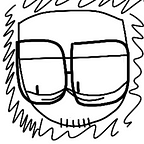Analysing “Revolution 9”
The Beatles need no introduction.
In less than a decade, they changed how music is recorded, perceived, and consumed. It’s no surprise that so many artists consider them an influence and critics consider them to be not only the greatest, but the most important band in contemporary music history. They were the drop that made the waters of the music industry ripple violently.
Many people will point to their best songs, their most influential songs, but to me, their most innovative song is a track off the White Album called “Revolution 9”. Upon first listen, you would have no idea what the hell is going on. Heck, you wouldn’t even call this cacophony a song! But after giving this track a couple of spins, you may begin to understand why this track is so innovative, as well as the appeal of musique concrete and sound collages.
Technical Analysis
“Revolution 9” is an avant-garde musique concrete piece, which uses pre-recorded recordings to make music. It’s almost like hip-hop, but this was released 5 years before hip-hop would be realised. This is an early example of a track that not only uses all kinds of recordings to create a track, but an early example that was widely released. Due to all kinds of technical limitations, John Lennon used the medium to create a thematic chaos to match the nature of the technique. Hence, it’s very fitting that this would be called “Revolution 9”, because it feels and sounds like a revolution. But why the 9?
Throughout the track, you’ll hear a clip of a man saying “number nine” over and over. What makes it so fascinating is the use of stereo panning, something that the Beatles are known for using. In the case of the White Album, it allows for the album to be somewhat comprehensive since the sounds don’t overlap so much, as well as for the sound to “travel” from speaker to speaker.
The stereo panning is also used to form its own innovations. Applause travels from left to right between channels, and my favorite part, the sound of a horn is met with zooming and wooshing sounds that almost remind me of lightsabers or cars zooming by. It also reminds me of a trick that Kid606 did on his album Who Still Kill Sound, as well as Outkast’s and +44’s use of backwards drums. I also like the bells that precede it and how they abruptly cut out before the sound is completed. This was before the age of perfectly cut screams and the time when people found humour in a scene when it cuts out before it finishes.
Artistic Analysis
If “Revolution 1” is about the meaning of a revolution, then “Revolution 9” is a depiction of such a revolution, with the “number nine” almost feeling like a chant, or a constant phrase used by those in the revolution. Another constant that you’ll hear on this are the random conversations that play around the many sounds of pianos, orchestras, and people chatting that come around. Either this is the commotion of the revolution or these are the rich people talking about it from above common ground.
Parts of the track happen suddenly or gradually. The track often changes focus, almost as if the stakes of the revolution just changed or we are looking at it from another angle. John Lennon screams “RIIIIIGHT”, like a feral call that would’ve left a lasting impression on those who participated. You could say they caught it on camera, but remember that the revolution will not be televised.
Clamoring and applause is often played, as if the revolution has become ochlocratic and now, they will applaud for those who say what they want to hear, or they will start crowding into one part of the city in an effort to bring about the revolution or to gain control of an area. Gunshots, fire, and the overall chaos of the track depict violence on the streets, as if the protestors are clashing with law enforcement.
At the end, a chant travels like the applause from earlier. It’s a football chant, probably meant to represent actual chanting.
Conclusion
Needless to say, this is a very chaotic track, but that’s the whole point because it’s meant to depict a revolution through sounds. It’s one of the best uses of a pure sound collage that I have seen, and its influence can be heard in all sorts of songs, from “Money” by Pink Floyd to “bury a friend” by Billie Eilish. They may not have been direct influences, but musique concrete in general has had a lasting impact on music.
In an age where protests, walkouts, and riots are becoming commonplace and rising in authoritarian countries, this is a piece that should gain more analysis instead of ridicule over the amount of discord that ensues. It still makes sense today where we face injustice each day and try to fight against it, and while it’s not an activist’s piece of music, it’s certainly a piece for those who love activism through the lens of an artist.
Just like our modern world, “Revolution 9” is chaotic, messy, and everybody is divided on what it is and how we are supposed to experience it. It’s art.
